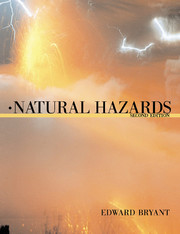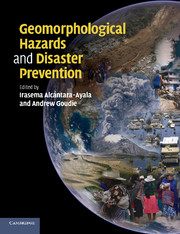Natural Hazards
Natural hazards afflict all corners of the Earth; often unexpected, seemingly unavoidable and frequently catastrophic in their impact. This revised edition is a comprehensive, inter-disciplinary treatment of the full range of natural hazards. Accessible, readable and well supported by over 180 maps, diagrams and photographs, it is a standard text for students and an invaluable guide for professionals in the field. Clearly and concisely, the author describes and explains how hazards occur, examines prediction methods, considers recent and historical hazard events and explores the social impact of such disasters. This revised edition, first published in 2005, makes good use of the wealth of recent research into climate change and its effects.
- Over 180 maps, diagrams and photographs
- A standard text for students and an invaluable guide for professionals in the field
- Recent research into climate change and its effects is incorporated into this fully revised edition
Reviews & endorsements
'Professor Bryant's heroic compilation is an excellent guide.' Scientific American
'The author writes a very readable work that is easily understood by students, professionals, and lay readers with interest in the field of natural disaster risk reduction … Natural Hazards is a valuable contribution of the UN International Strategy for Disaster Reduction. It will appeal to students, scientists, and disaster risk managers. It will also appeal to the general public interested in natural hazards.' EOS
Product details
March 2005Paperback
9780521537438
330 pages
279 × 216 × 18 mm
0.77kg
180 b/w illus.
Available
Table of Contents
- 1. Introduction to natural hazards
- Part I. Climatic Hazards:
- 2. Mechanisms of climate variability
- 3. Large-scale storms as a hazard
- 4. Localized storms
- 5. Drought as a hazard
- 6. Flooding as a hazard
- 7. Fires in nature
- 8. Oceanic hazards
- Part II. Geological Hazards:
- 9. Causes and prediction of earthquakes and volcanoes
- 10. Earthquakes and tsunami as hazards
- 11. Volcano as a hazard
- 12. Land instability as a hazard
- 13. Personal and group response to hazards
- 14. Epilogue.






